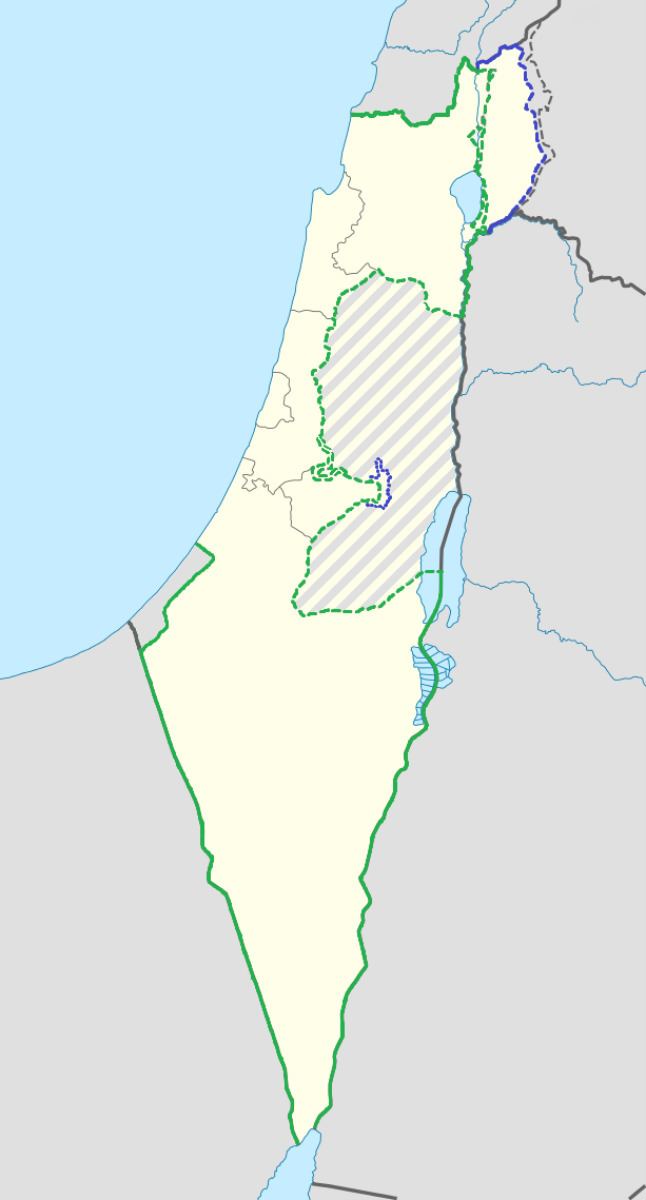Alternate name Apheq | Public access Nature Reserve | |
 | ||
Periods Middle Bronze Age - Crusader period | ||
Tel Afek, (Hebrew: תל אפק), also spelled Aphek and Afeq, is an archaeological site located in the coastal hinterland of the Ein Afek Nature Reserve, east of Kiryat Bialik, Israel. It is also known as Tel Kurdani.
Contents
History
The site is what remains of the biblical town of Aphik, which is mentioned in the Joshua 19:30 and Judges 1:31 as belonging to the Tribe of Asher. In ancient Israel (c 950 BCE) the area was part of Cabul and was given to Hiram I by Solomon as a reward for various services rendered to him in building the First Temple. 1 Kings 9:12. The name is apparently derived from the nearby abundant springs (אפיקים afikim in Hebrew).
Remains from the Chalcolithic age, and tombs from the Middle Bronze Age and Late Bronze Ages have been excavated here.
Pottery from the Persian, Hellenistic Roman, Byzantine and Crusader times eras have been found here.
In the Crusader era, it was known as Recordane, and in 1154, the mill and village was acquired the Hospitalliers. Between 1235 and 1262 the Hospitalliers had a dispute with the Templars about water rights. Two aqueducts, dating from this era, have been excavated.
In 1283 it was still part of the Crusader states, as it was mentioned as part of their domain in the hudna between the Crusaders based in Acre and the Mamluk sultan Qalawun.
A two-story fortress still stands. A water-powered flour mill operated on the lower floor.
Ottoman era
Incorporated into the Ottoman Empire in 1517, it appeared under the name Kufrdani in the census of 1596, located in the Nahiya of Acca of the Liwa of Safad. The village was noted as "hali" (empty), but taxes were paid, a total of 1,800 Akçe. The stair to the tower roof of the mill, and two more wheel-chambers in the southern part of the mill was added in the Ottoman period.
In 1881, the Palestine Exploration Fund's Survey of Western Palestine (SWP) found at Kh. Khurdaneh (east of the mill) only heaps of stones. In 1900, Gottlieb Schumacher found here markings on the mill which he took to be Phoenician.
British Mandate era
In 1925 a Zionist organisation purchased 1,500 dunums in Kordaneh, from Alfred Sursuk, of the Sursuk family of Beirut. At the time, there were 20 families living there.
In the 1931 census of Palestine, Mathanat Kurdani was counted under Shefa-'Amr.
Ein Afek nature reserve
The Ein Afek nature reserve, declared in 1979, covers 366 dunams. An additional 300 dunams were declared in 1994. The highlights of the park include the Crusader fortress and the natural water canals and lake, which draw their waters from the year-long flowing springs of Afek, which are the source of the Naaman river.
